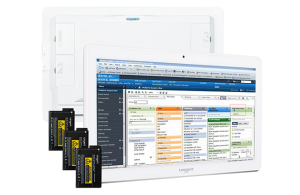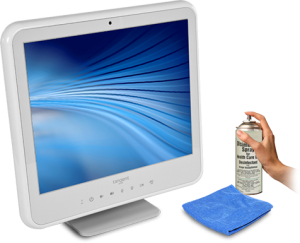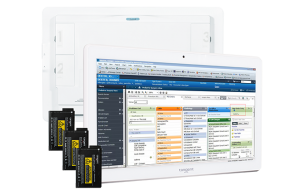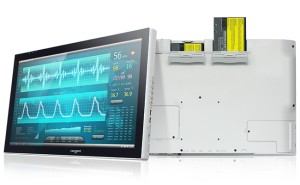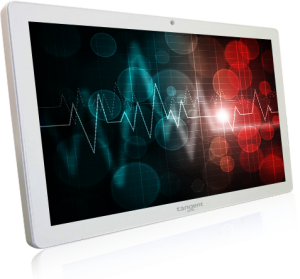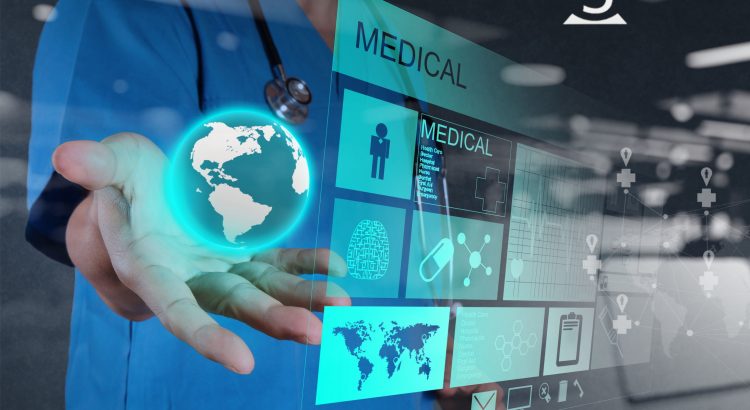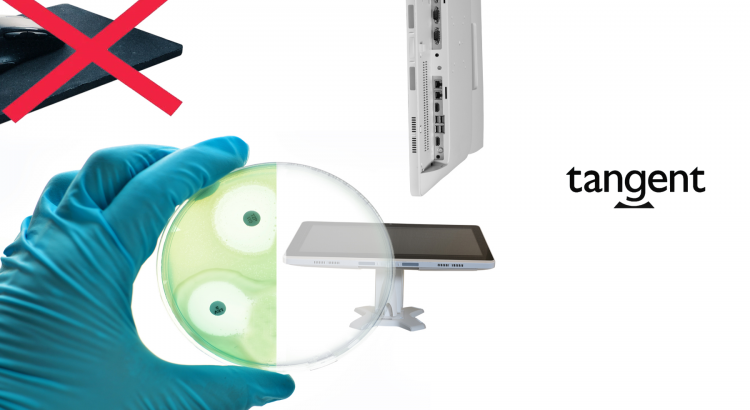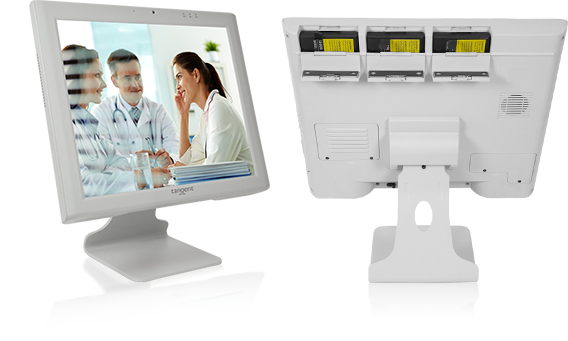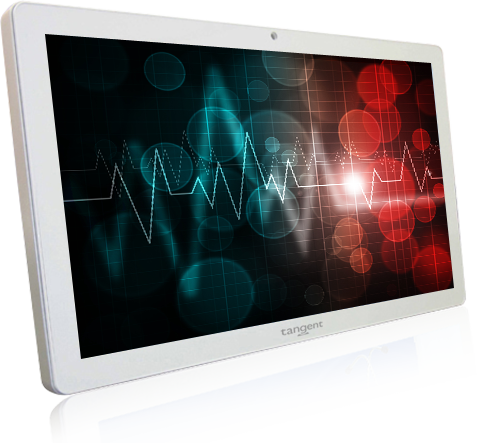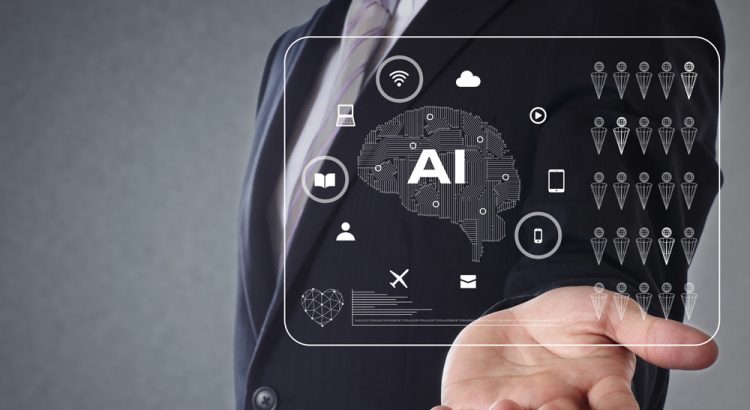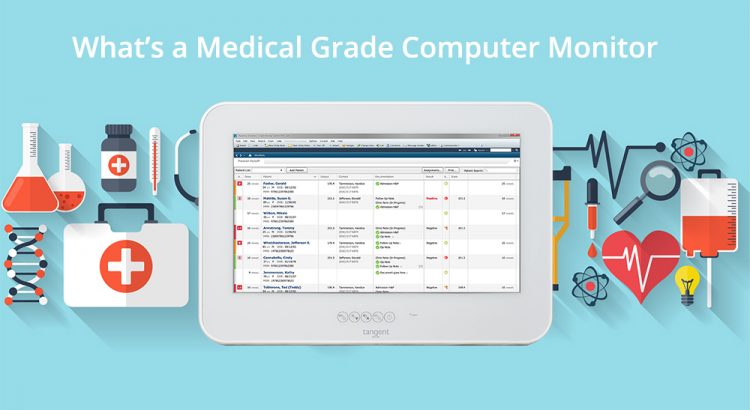It may be surprising to hear, but calling a monitor “medical grade” isn’t just a marketing tactic. To be a medical monitor, the medical monitor must meet certain legal criteria that allows for the use of the term. These criteria, such as EN/IEC 60601-1 compliance, help keep both patients and doctors safe from workplace hazards. Other features are not legally required, but help maintain a safe and productive work environment in your hospital. These features range from bacteria resistance to touchscreen support, and provide medical personnel with quality of life improvements not found in commercial monitors. Medical monitors are designed specifically for use in the hospital, and their compliance with legal standards and catalogue of features help make them the best choice for hospitals.
Safety Standards
In order to be sold as a medical monitor, a medical monitor must be compliant with the EN/IEC 60601-1 standard from the National Fire Protection Association Health Care Facilities Code (NFPA 99). The IEC 60601-1 standards are used widely across the globe to create electronics that are safe for use in the medical setting. The EN 60601-1 standards are extremely similar to their IEC counterparts, and function as north america’s variant of the code. These safety standards include rules that limit the amount of electrical leakage from medical monitors to 100 microamps, making them safe for use around patients.
Alongside EN/IEC 60601-1 standards, the Food and Drug Administration (FDA) has its own set of regulations that govern medical monitors. Under 510(k) regulations, medical monitors must be demonstrated to be as effective and safe as a medical monitor that is currently on the market. This set of regulations ensures that ineffective or otherwise low quality monitors are not available on the market as medical monitors, saving hospitals from potentially buying fraudulent medical monitors and harming patients in the process. Some commercial monitors are able to meet these standards, but they are not explicitly designed to do so and may not be as effective as a stand-in medical monitor over time. Commercial grade monitors also do not feature image accuracy software, which is critical for making diagnoses and in the surgery room.
Higher Image Accuracy
In the medical setting, computer monitors are not only used for displaying web pages and spreadsheets, but also for showing x-ray images and other diagnostic images. Having these images displayed as accurately as possible is critical to making accurate diagnoses and decisions for care. Experts are still debating on how many colors exactly the human eye can discern, but current estimates put the number around ten million. Tangent’s lineup of medical monitors can display 16.7 million colors, 50% more than is assumed we can currently see. So why have this many colors then? Having this range of color output options allows for greater accuracy matching an image’s true color makeup as the eye would normally see it as if it were printed out. This allows doctors and medical staff to make precise decisions when looking at images and have confidence in their judgement.
Most commercial monitors can meet this range of color output, however they do not possess the necessary control system to fully utilize it. Traditional commercial monitors have a manual color control system attached to their monitor normally labeled “brightness control.” While this manual system works fine for home and commercial use, it fails to be useful in the medical setting. Luminance levels vary depending on how long a monitor has been in use, with large shifts occurring from startup to being fully warmed up. If a commercial monitor were to be used in lieu of a medical monitor, one would have to manually adjust the brightness control constantly to maintain image accuracy, all without having a reference point. This would be like tuning a guitar string without knowing what note it is supposed to correspond to.
To avoid the discoloration associated with the variance of luminance levels across time, medical monitors today feature Digital Imaging and Communications in Medicine (DICOM) standards support. Medical monitors that utilize DICOM standards feature technology built into the monitor that actively changes luminance levels to best represent the image on screen as accurately as possible. This automated brightness control system is critical to the medical setting, as it allows for medical monitors to be used with confidence that they are displaying images accurately.
Bacteria and Disease Resistance
Diseases contracted in the medical setting, often referred to as nosocomial infections, are a massive concern for hospitals across the country. Not only are such infections a liability for the hospital, but they also go against the purpose of institutions designed to make people healthier. Limiting the spread of nosocomial diseases like MSRA superbugs is critical to hospitals, and therefore critical to medical monitor providers. Tangent’s medical monitors are designed with nosocomial infections in mind and are built to help combat these diseases.
Tangent’s medical monitors feature an antimicrobial additive that is coated onto the monitor’s enclosure directly. This antimicrobial additive helps mitigate the growth of bacteria on the medical monitor’s surface, and thus prevents diseases from forming on the monitor. This is especially useful to Tangent’s medical monitors specifically, as they are fully touch screen enabled. This allows both doctors and nurses to quickly scan medical charts with their fingers without worrying about how many hands have touched the monitor that day. The medical monitors are also IP65 rated water resistant, meaning that it can be easily cleaned with normal cleaning products. The antimicrobial additive is waterproof as well, and will not come off with regular cleaning, making the entire medical monitor safe for regular cleaning.
Medical Monitors: The Safe Choice
Not only do medical monitors meet the legal standards to be sold as medical monitors, they utilize vital features that make them ideal for the medical setting. Using medical monitors in your hospital ensures that patients and doctors are not experiencing abnormal levels of electrical leakage. They also perform critical image accuracy procedures to produce precise pictures on screen for diagnosis. Being touchscreen enabled, medical monitors’ antimicrobial enclosures are critical to helping prevent nosocomial infections. When it comes to the medical setting, it’s clear that medical monitors are necessary tool for safe and accurate computer usage.
